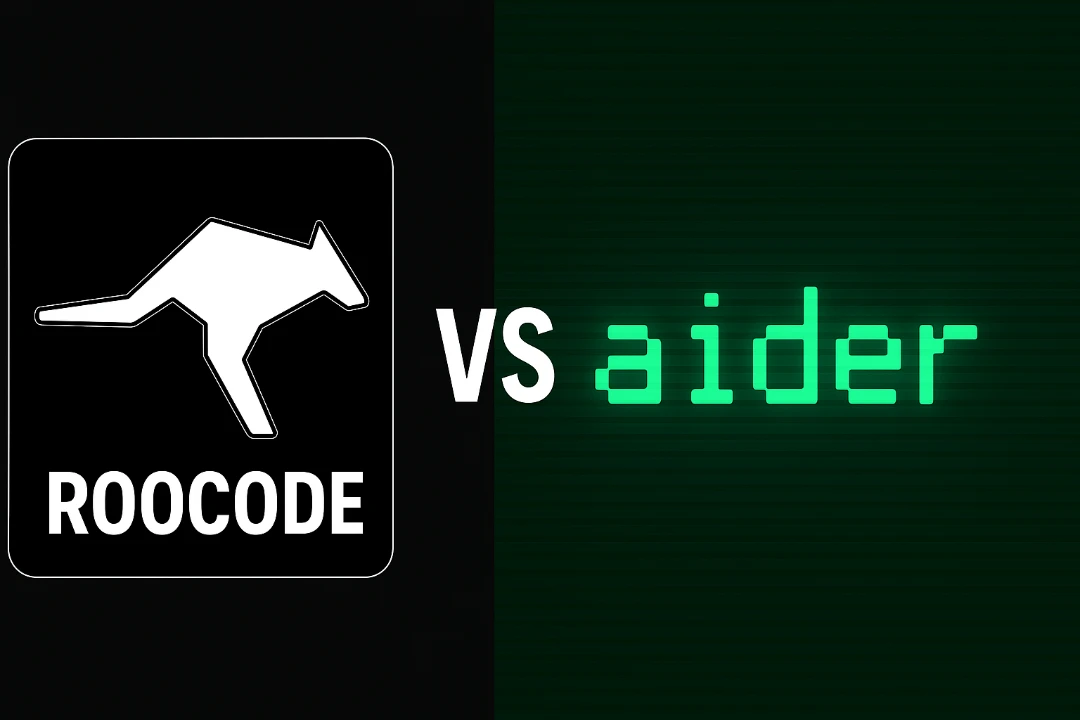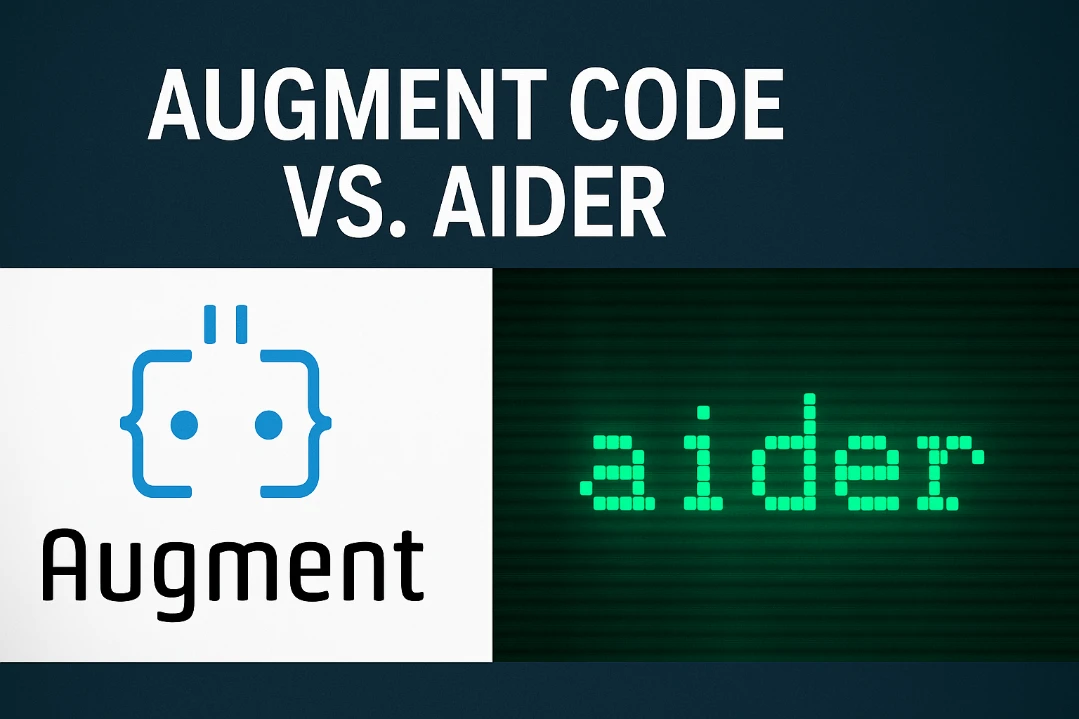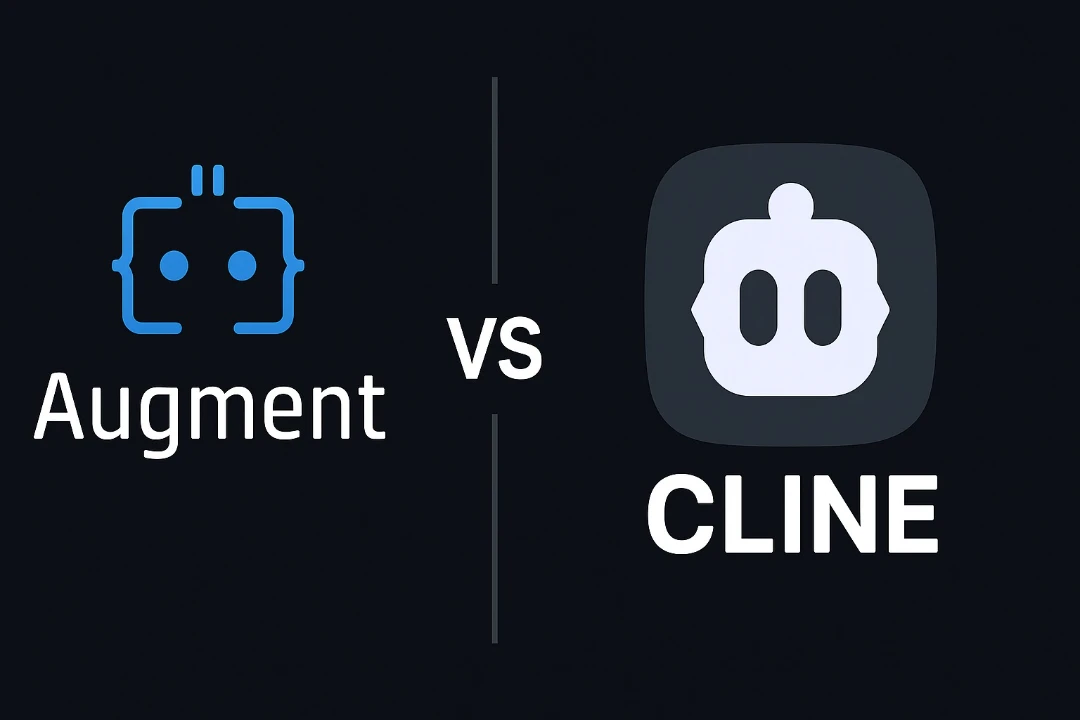
Roo Code vs Aider: Comparing the Top AI Coding Assistants in 2025
Roo Code vs Aider: Comparing the Top AI Coding Assistants in 2025
In today's rapidly evolving software development landscape, AI-powered coding assistants have become indispensable tools for developers seeking to enhance productivity and streamline workflows. Two prominent contenders in this space are Roo Code and Aider, each offering unique approaches to AI-assisted development. While both provide impressive capabilities for code generation, debugging, and project management, their implementations, strengths, and ideal use cases differ significantly.
This comprehensive guide examines the key differences between these powerful tools, helping you determine which might better align with your development needs, workflow preferences, and technical requirements.
The Origin and Evolution of Roo Code and Aider
Roo Code: The Customizable VS Code Extension
Roo Code began as a fork of the popular Cline extension for VS Code, rebranded from its original name "Roo Cline." Building on Cline's solid foundation of autonomous coding capabilities, Roo Code has expanded into a highly customizable and feature-rich AI coding assistant that integrates seamlessly with your existing development environment.
Open-source autonomous AI coding agent with extensive customization and multi-model support
Roo Code operates as a VS Code extension that brings powerful AI assistance directly into your familiar editor. Key capabilities include:
- Creating and editing files with rich contextual awareness
- Executing terminal commands with user permission
- Multiple specialized interaction modes (Code, Architect, Debug)
- Browser automation for testing and debugging
- Comprehensive codebase understanding
With its growing popularity in the developer community, Roo Code has established itself as a versatile and powerful tool for developers who want to enhance their existing workflow rather than switching to an entirely new environment.
Aider: The CLI-Based Pair Programming Assistant
Aider takes a fundamentally different approach as a command-line interface (CLI) based tool designed for terminal-based pair programming. Created with a focus on precision and efficiency, Aider represents a lightweight yet powerful solution where AI assistance functions like an experienced pair programmer at your terminal.
AI pair programming tool that lets you code with LLMs right in your terminal
As a command-line based coding assistant, Aider offers:
- Terminal-based pair programming experience
- Git integration with automatic commits
- Support for cloud and local language models
- Multi-file editing capabilities
- Codebase mapping for contextual understanding
- Voice-to-code functionality
Launched as an open-source project, Aider has gained significant traction in the developer community with over 31.2k stars and 2.8k forks on GitHub, attracting developers who appreciate its minimalist approach and precise code interventions.
Core Feature Comparison
When evaluating AI coding assistants, understanding their core capabilities is essential. Let's explore how Roo Code and Aider compare across key functionality areas:
Code Generation and Editing
Roo Code:
- Contextual code generation based on your codebase
- Efficient diff-based editing that modifies only necessary parts
- File creation and editing through natural language instructions
- Automatic detection and fixing of incomplete code segments
- Multiple specialized modes tailored to different coding tasks
Aider:
- Natural language to code conversions in the terminal
- Precise code edits with minimal token usage
- Support for generating large code outputs by breaking down tasks
- Multi-file editing capabilities for complex changes
- Automatic Git commits with sensible commit messages
Key Difference: While Roo Code offers a rich graphical interface with extensive customization options in VS Code, Aider provides a streamlined terminal experience focused on efficiency and precision. Roo Code excels in quick iterations with its GUI, while Aider is praised for its "surgical" approach to code modifications with minimal token overhead.
Terminal Command Execution
Roo Code:
- Execute commands in your existing VS Code terminal
- Real-time output processing and response
- Permission-based execution model for security
- Background task support for long-running processes
- Automated command execution for repetitive tasks
Aider:
- Direct integration with your terminal environment
- Efficient handling of command outputs for context
- Ability to run linters and tests automatically
- Streamlined workflow for command-based operations
- Terminal-first philosophy for developers who live in the command line
Key Difference: Both tools offer robust terminal interaction, but Aider's CLI-based approach makes terminal operations feel more native and streamlined. Roo Code integrates terminal functionality within its VS Code extension, which may feel more accessible to developers who prefer GUI environments.
Model Support and Flexibility
Roo Code:
- Support for a wide range of models via multiple providers
- OpenRouter, Anthropic, OpenAI, Google AI Studio integration
- Enhanced support for models like GPT-4o and Claude 3.7 Sonnet
- Compatible with local models through LM Studio/Ollama
- Custom model configuration and fine-tuning options
Aider:
- Works with Claude 3.7 Sonnet, DeepSeek R1 & Chat V3, OpenAI models
- Support for virtually any LLM, including local models
- BYOM (Bring Your Own Model) approach for flexibility
- Optimized token usage to reduce API costs
- Efficient context management for better model performance
Key Difference: Both tools support a similar range of models, but their approaches differ. Roo Code emphasizes extensive customization options for model behavior, while Aider focuses on efficient token usage and performance optimization. Aider's approach often results in lower API costs despite using the same underlying models.
Git Integration
Roo Code:
- Basic Git awareness for file changes
- Support for viewing and managing diffs
- Integration with VS Code's Git functionality
- Change tracking through editor interface
- Branch awareness for contextual coding
Aider:
- Automatic Git commits with meaningful commit messages
- Seamless integration with existing Git workflows
- Built-in diff viewing capabilities
- Targeted git operations from the terminal
- Git-aware context management for better code understanding
Key Difference: While both tools work with Git, Aider's integration is deeper and more automatic, with features like automatic commits being core to its workflow. Roo Code relies more on VS Code's existing Git integration, making it familiar but less specialized for Git operations.
User Interface and Interaction Design
Roo Code:
- Operates within familiar VS Code interface
- Chat panel for interaction with the AI assistant
- Mode-switching UI for quick context changes
- Extensive settings and configuration options
- Visual feedback for code changes and suggestions
Aider:
- Minimalist terminal-based interface
- Text-based interaction with natural language
- Command-based workflow for operations
- Low visual overhead for distraction-free coding
- Efficient keyboard-driven interaction
Key Difference: This represents perhaps the most fundamental difference between the two tools. Roo Code offers a rich visual interface within VS Code with numerous UI elements for interaction, while Aider provides a text-based terminal experience focused on efficiency and minimalism. Your preference will largely depend on whether you favor GUI or CLI environments for development.
User Experience Analysis
The user experience significantly impacts productivity and satisfaction with AI coding tools. Here's how Roo Code and Aider compare:
Interface Design and Usability
Roo Code:
- Feature-rich interface with extensive customization options
- Mode-switching controls for different contexts
- Familiar VS Code environment reduces learning curve
- Progressive discovery of advanced features
- Some complexity from extensive feature set
Roo Code's interface philosophy builds on the familiar VS Code experience, adding AI capabilities without fundamentally changing how you interact with your editor. This approach minimizes disruption but can introduce some visual complexity as features are added.
Aider:
- Minimalist CLI interface focused on efficiency
- Command-based workflow with clear textual feedback
- Steep initial learning curve for CLI operations
- Fast operation once mastered
- Distraction-free coding environment
Aider's terminal-based approach offers a clean, focused experience that appeals to developers who prefer command-line tools. While it may have a steeper initial learning curve for GUI-oriented developers, it provides a streamlined experience once mastered.
Setup and Configuration
Roo Code:
- Simple installation via VS Code marketplace
- Configuration through standard VS Code settings
- Project-level configuration files for team standardization
- Learning curve primarily associated with advanced features
- Uses familiar VS Code extension patterns
Aider:
- Installation via pip with a simple command
- Configuration through command-line arguments or config files
- Language model API keys required for operation
- Initial setup focused on API connections
- Quick start for terminal-familiar developers
The setup experience reflects the fundamental difference in approach - Roo Code integrates into your existing VS Code environment, while Aider operates independently in your terminal. This makes Roo Code's initial adoption friction potentially lower for VS Code users, while Aider may appeal more to developers already comfortable with CLI tools.
Learning Curve
Roo Code:
- Moderate learning curve for basic functionality
- Steeper curve for advanced features and customization
- Builds on existing VS Code knowledge
- Progressive discovery of capabilities
- Documentation and community support for learning
Aider:
- Steeper initial curve for GUI-oriented developers
- Gradual learning through terminal commands
- Simpler overall feature set to master
- Focus on mastering prompts rather than UI navigation
- Strong documentation but smaller community compared to VS Code extensions
The learning curve for each tool varies depending on your background. VS Code users will find Roo Code more immediately accessible, while terminal power users may prefer Aider's straightforward CLI approach. Both tools require some investment to master their full capabilities.
Cost and Pricing Comparison
Understanding the cost structure of AI coding assistants is crucial for making an informed decision, especially for long-term use.
Pricing Models
Roo Code:
- Free extension with BYOM (Bring Your Own Model) approach
- Costs based on API usage of chosen models
- Compatible with OpenRouter for centralized API billing
- No subscription fee for the extension itself
- Flexible model choice allows cost optimization
Aider:
- Open-source tool with no direct costs
- BYOM approach with costs tied to API usage
- Optimized token usage for reduced API expenses
- Support for local models to eliminate API costs
- No subscription fees or premium tiers
Key Difference: Both tools adopt a BYOM approach, making API usage the primary cost factor. However, Aider's focus on minimal token usage and efficient context management often results in lower overall API costs for similar tasks. Users have reported spending significantly less on API fees with Aider compared to other AI coding assistants for equivalent work.
Cost Management Strategies
Roo Code:
- Use of OpenRouter for discounted API rates
- Model switching for cost-appropriate tasks
- Context window customization to reduce token usage
- Settings optimization for efficiency
- Local model support for zero-API-cost operation
Aider:
- Highly efficient token usage by design
- Support for efficient models like DeepSeek for cost reduction
- Local model integration for offline work
- Precise context management to minimize token consumption
- CLI approach inherently reduces unnecessary token usage
Cost Consideration: For cost-conscious developers, Aider's efficient design may provide better long-term value despite both tools using similar underlying models. Some users have reported spending as little as $0.02 for complex fixes with Aider, while similar tasks in other tools might cost significantly more.
Real-World Applications and Use Cases
Each tool excels in different scenarios based on their design philosophy and capabilities.
Ideal Use Cases for Roo Code
1. Comprehensive Project Development Roo Code's VS Code integration and multiple specialized modes make it excellent for developers working on complete projects from start to finish. The Architect mode helps plan out systems, while Code mode assists with implementation, creating a comprehensive development environment.
2. Experimental Feature Exploration Developers who want to stay on the cutting edge of AI coding capabilities will appreciate Roo Code's rapid release cycle and experimental features like Boomerang Mode, which helps orchestrate planning and task subdivision automatically.
3. GUI-Oriented Development Workflows Teams that rely heavily on Visual Studio Code and prefer graphical interfaces for their development will find Roo Code's seamless integration and visual feedback mechanisms more aligned with their existing workflow.
4. Complex Multi-Mode Development Projects requiring different approaches for different phases benefit from Roo Code's specialized modes, allowing developers to switch contexts between architecture planning, coding, and debugging with tailored AI assistance for each.
Ideal Use Cases for Aider
1. Precision Code Editing and Fixes Aider excels at making targeted, precise modifications to existing codebases. Its "surgical" approach makes it ideal for bug fixes, refactoring, and making specific changes without overwhelming token usage.
2. Terminal-Centric Developers Developers who live in the terminal and prefer command-line tools will feel right at home with Aider's CLI-based interface, which integrates naturally with existing terminal workflows.
3. Efficient API Usage and Cost Management For developers concerned about API costs or working with limited API credits, Aider's efficient token usage and minimal overhead make it the more economical choice for regular use.
4. Git-Integrated Workflows Teams that rely heavily on Git for collaboration will appreciate Aider's automatic commits and deep Git integration, which makes tracking changes and understanding development history more straightforward.
User Testimonials and Community Feedback
Real users provide valuable insights into how these tools perform in practice. Here's what developers are saying:
Roo Code User Feedback
"Roo Code's customizability is amazing. I can tweak it to work exactly how I want, and the multiple modes have completely changed how I approach development. The Architect mode helps me plan before I dive into coding, which has improved my project structure significantly." - Developer on Reddit
"I love how Roo Code stays on the cutting edge. They're always adding new models and features, sometimes even before the big players. The Boomerang Mode is a game-changer for planning out complex features." - VS Code extension reviewer
"The learning curve was worth it for the power Roo Code provides. I've customized it extensively for my workflow, and now it feels like having a senior developer looking over my shoulder constantly." - GitHub comment
Aider User Feedback
"Aider has easily quadrupled my coding productivity. It's like having a senior developer living in your Git repo - truly amazing!" - SOLAR_FIELDS on Reddit
"After wasting $100 on tokens trying to find something better, I'm back to Aider. It blows everything else out of the water hands down, there's no competition whatsoever." - SystemSculpt on GitHub
"Aider is amazing, coupled with Sonnet 3.5 it's quite mind blowing. The CLI approach feels so much more direct than fighting with visual interfaces, and I love how it automatically commits my changes." - Josh Dingus on LinkedIn
"I have been recovering from multiple shoulder surgeries and have used Aider extensively. It has allowed me to continue productivity when typing is difficult." - codeninja on GitHub
Performance and Efficiency
How these tools perform in real-world coding scenarios can significantly impact your productivity.
Speed and Responsiveness
Roo Code:
- Quick response times within VS Code environment
- Occasional latency with complex operations
- Performance tied to chosen AI model
- Visual feedback during processing
- Potential slowdowns with extensive customizations
Aider:
- Fast terminal-based operation
- Minimal overhead for quick responses
- Efficient token usage speeds up model responses
- No GUI lag or rendering delays
- Streamlined processing pipeline
Performance Comparison: Aider's minimalist CLI approach often results in faster perceived performance due to lower overhead, while Roo Code's rich features within VS Code may occasionally introduce slight delays. However, both tools depend primarily on the speed of the underlying AI models for most operations.
Code Quality and Accuracy
Roo Code:
- High-quality code generation with context awareness
- Multiple revision passes with diff-based editing
- Mode-specific optimizations for different tasks
- Extensive context window captures more codebase details
- Visual diffing helps identify potential issues
Aider:
- Precise, surgical code modifications
- Automatic Git commits maintain quality control
- Efficient context management for better model understanding
- Built-in linting and testing integration
- Quality benefits from minimal token overhead
Quality Comparison: Both tools can produce high-quality code, but their approaches differ. Roo Code emphasizes iterative improvement through its rich interface, while Aider focuses on precise, targeted changes with automated quality controls like Git integration and testing.
Integration with Development Ecosystem
How well these tools fit into your broader development environment is crucial for seamless adoption.
IDE and Editor Support
Roo Code:
- Native VS Code integration
- Potential support for VS Codium and similar editors
- Deep integration with editor features
- Extension ecosystem compatibility
- VS Code settings synchronization
Aider:
- IDE-agnostic terminal approach
- Works alongside any editor
- Support for IDE plugins in popular editors
- Focus on file system rather than editor integration
- Compatible with any development environment with a terminal
Integration Difference: Roo Code offers a deeper, more specialized integration with VS Code but is largely tied to that ecosystem. Aider's terminal-based approach works universally across development environments but with less visual integration.
Workflow Compatibility
Roo Code:
- Designed for VS Code-centric workflows
- Integration with VS Code tasks and features
- Supports visual programming paradigms
- Project-wide awareness within VS Code
- Compatible with VS Code extension ecosystem
Aider:
- Designed for terminal-centric workflows
- Integration with command-line tools and scripts
- Supports pipeline and automation approaches
- Repository-wide awareness with Git integration
- Compatible with CLI tools ecosystem
Workflow Comparison: Your existing workflow will largely determine which tool fits better. VS Code power users will find Roo Code more immediately compatible, while developers who prefer terminal-based tools and automation will likely gravitate toward Aider.
Future Development and Community Support
The long-term viability and growth of these tools depend on their development trajectory and community engagement.
Development Velocity
Roo Code:
- Rapid release cycles with frequent updates
- Quick adoption of new models and capabilities
- Active feature development and experimentation
- Growing community of contributors
- Regular addition of experimental features
Aider:
- Steady, focused development approach
- Emphasis on stability and reliability
- Over 12,000 commits on GitHub
- 31.2k stars and 2.8k forks showing strong community interest
- Consistent improvements to core functionality
Development Comparison: Roo Code tends to move faster with more experimental features, while Aider follows a more measured approach prioritizing stability and core functionality improvements. Both maintain active development but with different philosophies.
Community and Support
Roo Code:
- Growing community within VS Code ecosystem
- Active Discord and GitHub discussions
- Regular updates and documentation improvements
- User-driven feature requests
- Extension marketplace reviews and feedback
Aider:
- Strong open-source community on GitHub
- Active Discord and community forum
- Comprehensive documentation
- Developer-focused communication
- Regular contributions from the community
Community Comparison: Both tools have active communities, but Aider's position as a popular open-source project gives it broader community involvement, while Roo Code's community is more centered around the VS Code extension ecosystem.
Conclusion: Choosing the Right Tool for Your Needs
After thoroughly examining Roo Code and Aider, it's clear that both offer powerful AI-assisted coding capabilities but with distinct approaches and strengths. Your choice should align with your development style, preferences, and specific needs.
Choose Roo Code if:
- You're deeply integrated into the VS Code ecosystem and prefer a graphical interface
- You value cutting-edge features and frequent updates, even if occasionally experimental
- You need specialized modes for different development tasks like architecture planning
- You prefer extensive customization options and visual feedback during coding
- You're comfortable with a BYOM approach but want rich UI integration
Choose Aider if:
- You prefer terminal-based tools and command-line workflows
- You value efficiency and precision over extensive UI features
- You're concerned about API costs and want optimized token usage
- You appreciate automatic Git integration and commit management
- You need a tool that works across any development environment with a terminal
The Hybrid Approach
Many developers find value in using both tools for different scenarios. Roo Code's rich features make it excellent for complex planning and multi-faceted projects, while Aider's precision and efficiency excel for targeted changes and cost-effective routine coding. Consider how each might fit into different aspects of your development workflow rather than viewing them as mutually exclusive options.
Ultimately, the best AI coding assistant is the one that seamlessly integrates into your workflow and enhances your productivity without introducing friction. Both Roo Code and Aider represent the cutting edge of AI-assisted development, and your specific needs will determine which is the perfect fit for your coding journey.
Further Resources
To explore these tools further:


